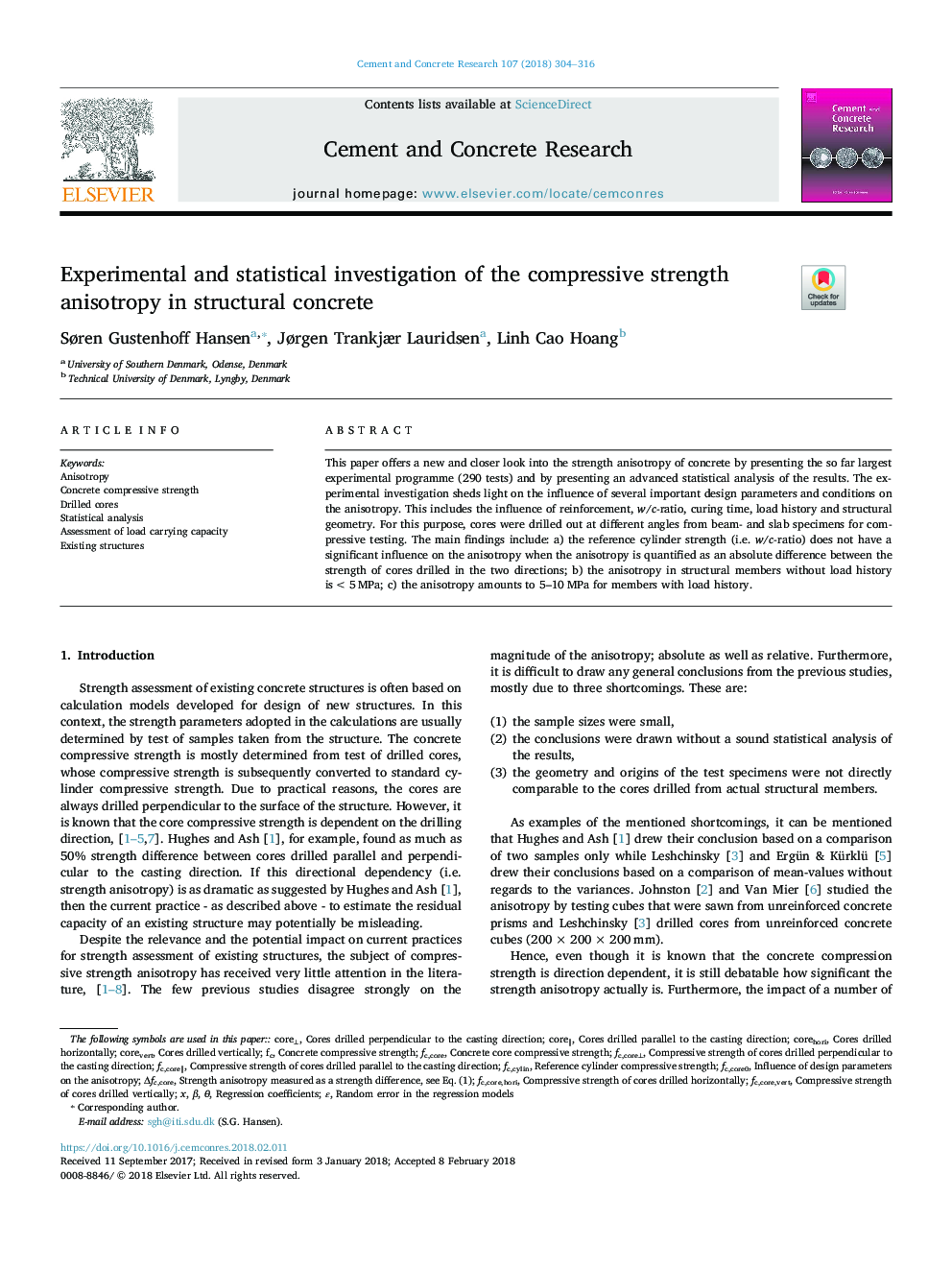| Article ID | Journal | Published Year | Pages | File Type |
|---|---|---|---|---|
| 7884813 | Cement and Concrete Research | 2018 | 13 Pages |
Abstract
This paper offers a new and closer look into the strength anisotropy of concrete by presenting the so far largest experimental programme (290 tests) and by presenting an advanced statistical analysis of the results. The experimental investigation sheds light on the influence of several important design parameters and conditions on the anisotropy. This includes the influence of reinforcement, w/c-ratio, curing time, load history and structural geometry. For this purpose, cores were drilled out at different angles from beam- and slab specimens for compressive testing. The main findings include: a) the reference cylinder strength (i.e. w/c-ratio) does not have a significant influence on the anisotropy when the anisotropy is quantified as an absolute difference between the strength of cores drilled in the two directions; b) the anisotropy in structural members without load history is <5â¯MPa; c) the anisotropy amounts to 5-10â¯MPa for members with load history.
Keywords
Related Topics
Physical Sciences and Engineering
Engineering
Industrial and Manufacturing Engineering
Authors
Søren Gustenhoff Hansen, Jørgen Trankjær Lauridsen, Linh Cao Hoang,
